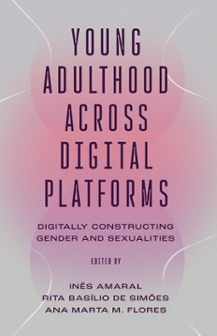
Index
Young Adulthood Across Digital Platforms
ISBN: 978-1-83753-525-5, eISBN: 978-1-83753-524-8
Publication date: 27 November 2024
Citation
(2024), "Index", Amaral, I., de Simões, R.B. and Flores, A.M.M. (Ed.) Young Adulthood Across Digital Platforms, Emerald Publishing Limited, Leeds, pp. 179-184. https://doi.org/10.1108/978-1-83753-524-820241011
Publisher
:Emerald Publishing Limited
Copyright © 2025 Inês Amaral, Rita Basílio de Simões and Ana Marta M. Flores. Published under exclusive licence by Emerald Publishing Limited
INDEX
- Prelims
- Chapter 1 Reimagining Identity in Mobile Apps: The Intersection of Gender and Sexuality Among Young Adults
- Chapter 2 Young Adulthood Digital Cultures and Practices: An Overview
- Chapter 3 Gender Across Digital Platforms
- Chapter 4 The Storefront of Gender in the Portuguese Google PlayStore
- Chapter 5 Young Adults' (Re)Negotiation of Gender and Sexual Identities Across Mobile Apps in Portugal
- Chapter 6 Fostering Intimacy in a Digital Environment: Couples, Mobile Apps and Romantic Relationships
- Chapter 7 Monitoring Bodies and Selves: Unveiling Menstrual Tracking Apps Under Foucault's Concepts
- Chapter 8 Doing Gender in WhatsApp Homosocial Groups
- Chapter 9 Community Engagement With Health Messages on Reproductive Health in an Age of Misinformation and Political Polarisation: A Case Study of the US NGO Open Arms in Florida
- Chapter 10 Views From Inside: Young Adults' Practices of Self-Governance on App-Based Platforms
- Index